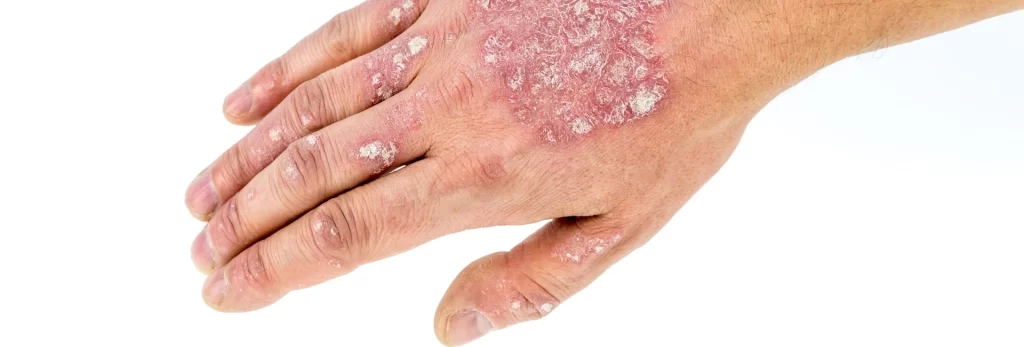At the Dermatology Center for Skin Health, PLLC, it is our goal to help our patients treat or cure their skin condition, including warts and several different types of dermatitis. Learn more about the five major types of warts and treatments, and the eight different types of dermatitis and treatments.
WARTS
Warts are benign, raised growths that are oval or round shaped, and can be lighter or darker than the skin around them. Warts most commonly affect the hands, fingers and elbows, as well as the knees.
There are five major types of warts:
- Common warts typically grow on the hands and toes. These warts are rough in appearance and rounded, and usually look grayer than the skin around it.
- Plantar warts are found on the soles of the feet. Unlike other warts, plantar warts grow into your skin.
- Flat warts are found on the face, lower legs and back of the hands, and can appear pink, brown or yellow.
- Filiform warts are most commonly found around the mouth and nose.
- Periungual warts are found around the fingernails and can affect nail growth.
Skin warts can be caused by viruses and are contracted by coming in contact with others who have warts. For example, if a person with a plantar wart showers without shower shoes at your local gym and you used the same shower without shower shoes directly after, there is a chance you may contract a wart.
Warts may go away on its within two years; however, you should see a dermatologist if:
- You are unsure that if the growth is a wart.
- The wart does not go away with home treatment or within two years.
- You want to discuss home treatments like the utilization of salicylic acid with a medical professional.
Medical treatments that could remove warts include:
- Freezing the wart off with liquid nitrogen.
- Removing the wart by shaving it off.
- Taking a prescribed skin cream.
- Injecting the wart with medicine to combat the wart virus.
DERMATITIS

There are many different types of dermatitis, including:
- Contact dermatitis
- Atopic dermatitis
- Dyshidrotic eczema
- Nummular eczema
- Hand eczema
- Neurodermatitis
- Seborrheic dermatitis
- Stasis Dermatitis
The one we are speaking about today is contact dermatitis. Contact dermatitis is a skin rash that a patient can get after touching something that they are allergic to like medication, cosmetics, soaps, plants and metals.
This type of rash appears to be red, itchy, painful and cracked, and if it is caused by an allergy, it can be swollen.
If you have a rash more than two weeks, you should see your doctor or dermatologist. Skin rashes can be treatment through several different plans:
- Creams: These creams contain steroids to relieve itching on the skin.
- Pills: Prescribing steroid pills, instead of creams, may be necessary.
- Dressing: If your skin rash is crusting, your doctor may ask that you utilize a wet dressing.
To prevent skin rashes, like dermatitis, wear gloves when working with metals, cosmetics, medications or soaps, and use milk soaps and hand creams for your skin.
COMMON SKIN CONDITIONS | HOW CAN WE HELP?
Our dermatologists know that your skin health is important to you. That is why our staff is dedicated to helping treat your skin condition. If you’d like to discuss your skin treatment plan with one of our staff, contact us by calling (304) 598-3888.


